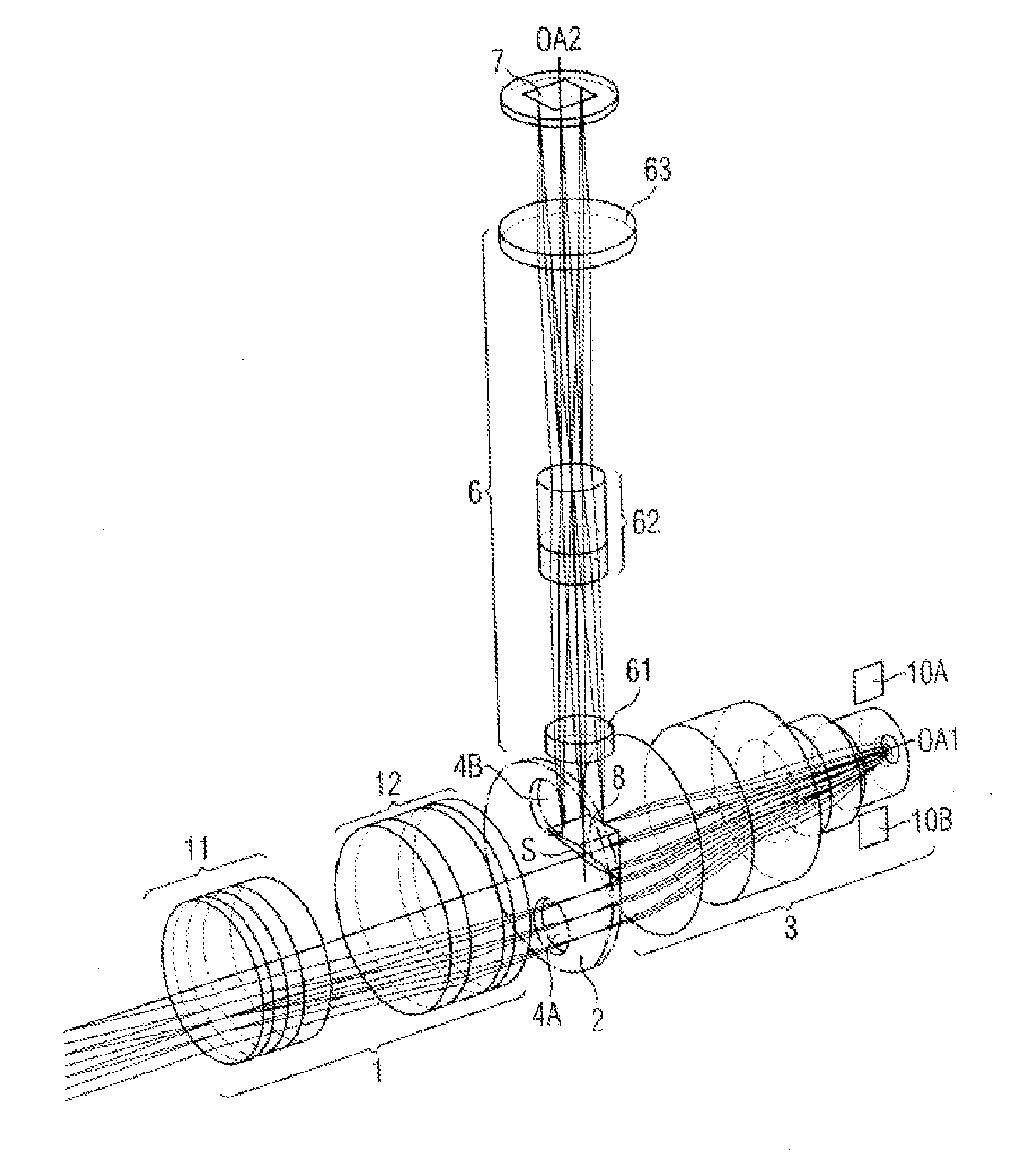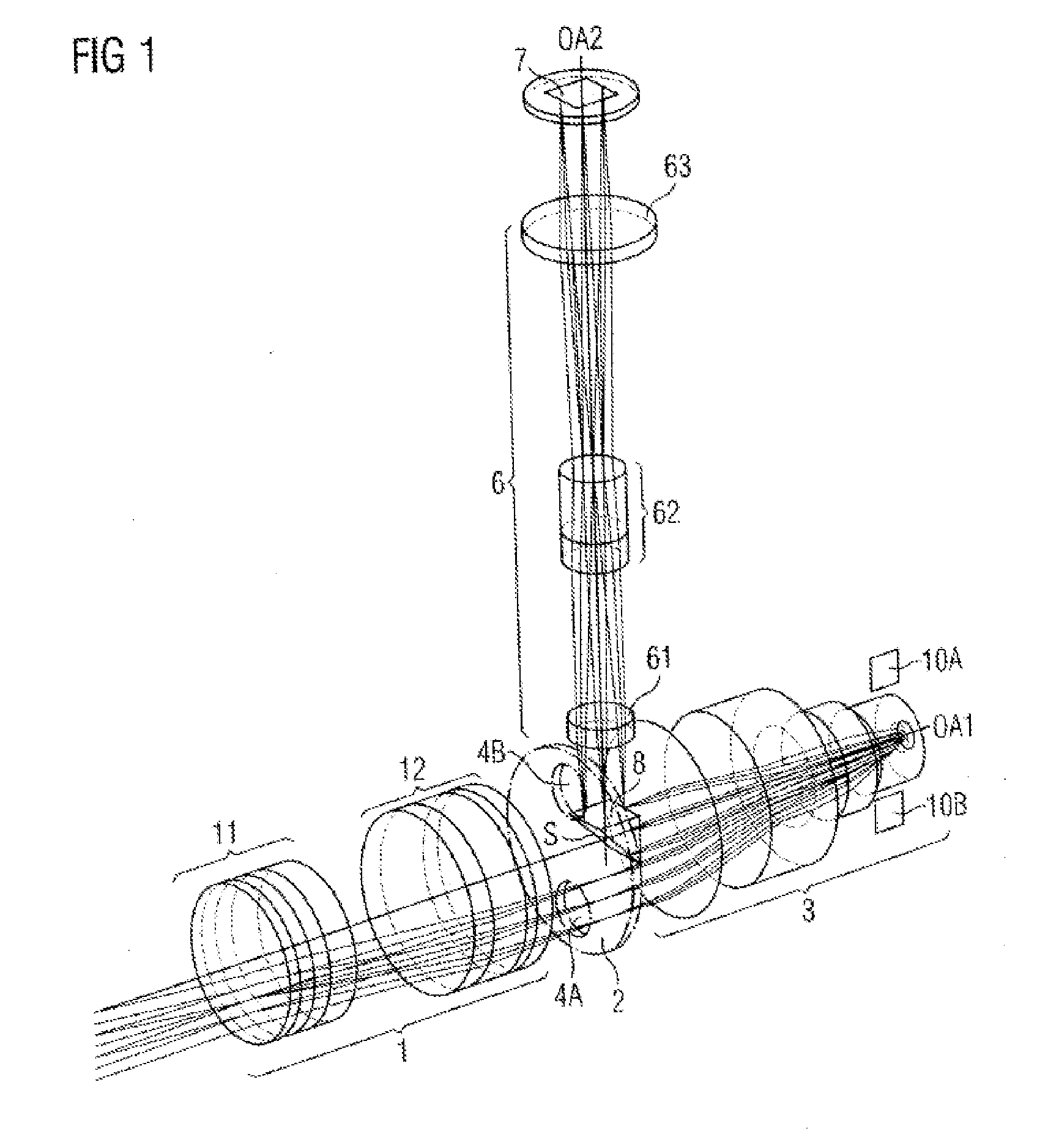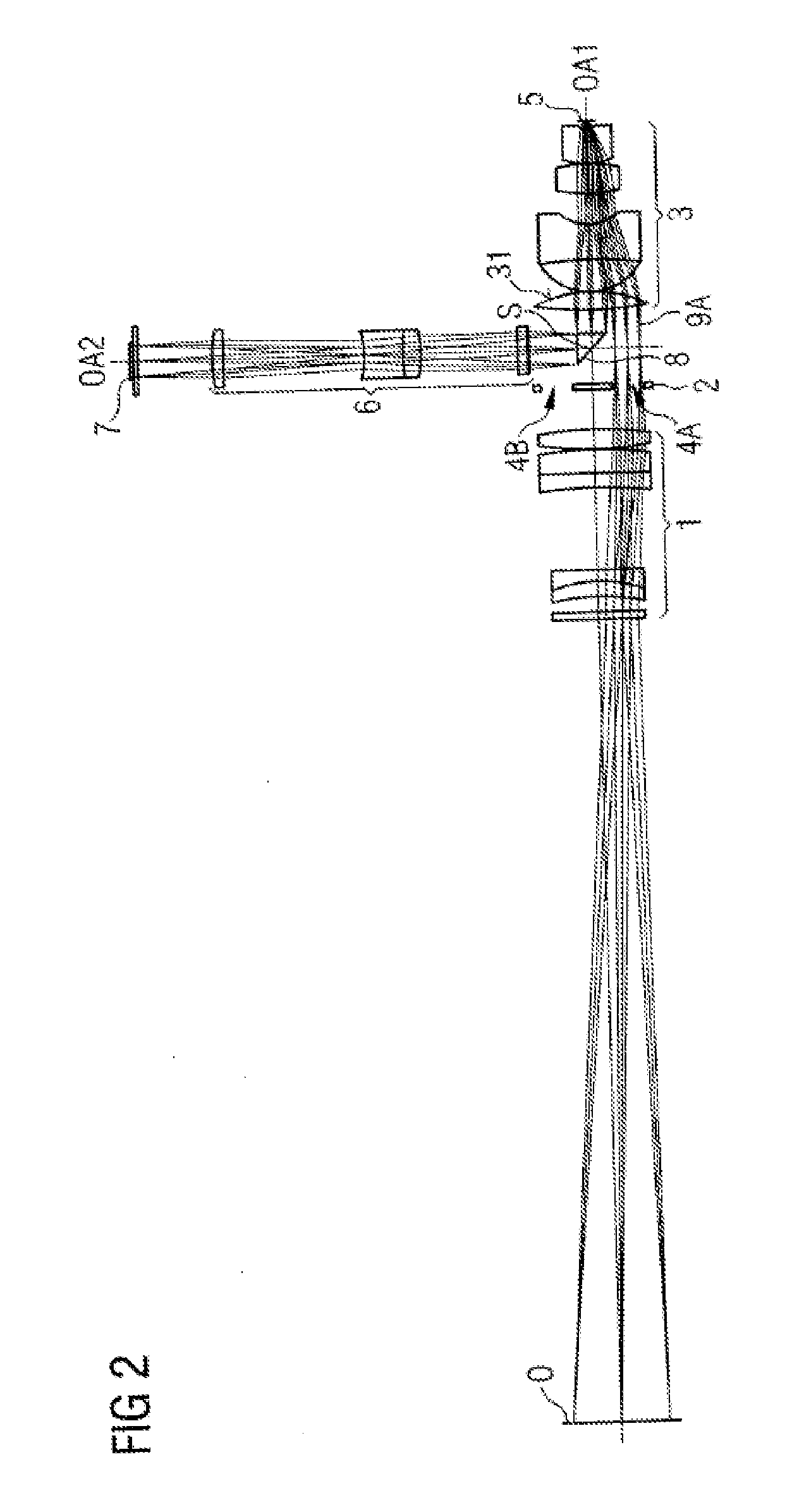Optical observation instrument with at least two optical transmission channels that respectively have one partial ray path
a technology of optical transmission channel and optical observation instrument, which is applied in the field of optical observation instrument with, can solve the problems of large installation volume, large installation volume of greenough-type system, and relatively high cost of providing double the number of optical systems and image sensors, and achieves reduced installation length of camera adapters, improved image quality, and high resolution
- Summary
- Abstract
- Description
- Claims
- Application Information
AI Technical Summary
Benefits of technology
Problems solved by technology
Method used
Image
Examples
Embodiment Construction
[0040]In the following text and with reference to FIGS. 1 to 4, a digital surgical microscope is described as an exemplary embodiment for an optical observation instrument according to the invention. The figures merely illustrate the optical components of the surgical microscope and (in FIGS. 2 and 3) the partial ray paths in order to avoid unnecessary complication of the figures. Here, FIG. 1 shows a perspective representation of the components. FIGS. 2 and 3 show the stereoscopic partial ray paths in a sectional view.
[0041]The surgical microscope embodied according to the invention comprises a main objective 1, an aperture stop 2, an intermediate imaging optical system 3 and a tilting mirror matrix 5, which are arranged one behind the other along a first optical axis section OA1 from the object side to the observer side. The surgical microscope furthermore comprises a camera adapter optical system 6 and an electronic image sensor 7, which are arranged one behind the other along a ...
PUM
 Login to View More
Login to View More Abstract
Description
Claims
Application Information
 Login to View More
Login to View More - R&D
- Intellectual Property
- Life Sciences
- Materials
- Tech Scout
- Unparalleled Data Quality
- Higher Quality Content
- 60% Fewer Hallucinations
Browse by: Latest US Patents, China's latest patents, Technical Efficacy Thesaurus, Application Domain, Technology Topic, Popular Technical Reports.
© 2025 PatSnap. All rights reserved.Legal|Privacy policy|Modern Slavery Act Transparency Statement|Sitemap|About US| Contact US: help@patsnap.com



